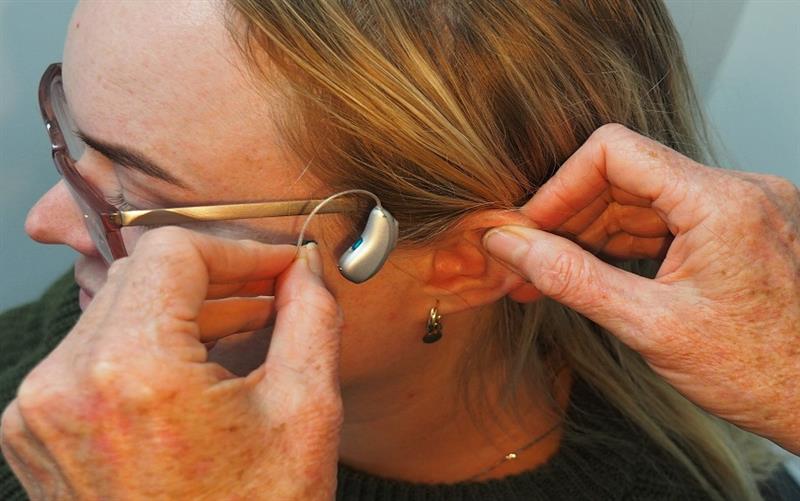
Hearing loss is a common condition that affects people of all ages. It occurs when there is a decrease in a person's ability to hear sounds clearly. This condition can range from mild to profound, and it can impact one or both ears. consulting with a professional audiologist, selecting the right style and technology, fitting and adjusting your hearing aid, and receiving ongoing support are all vital components of the process. With your perfect hearing aid, you can embrace a life filled with the sounds of joy and communication.
Hearing loss can be caused by various factors, and it's important to understand these causes to better manage and prevent hearing impairment.
There are different types of hearing loss, including:
Conductive Hearing Loss:
This type of hearing loss occurs when there are problems with the ear canal, eardrum, or middle ear, preventing sound from reaching the inner ear.
Sensorineural Hearing Loss:
Sensorineural hearing loss is often related to damage to the inner ear or the auditory nerve. It is the most common type of permanent hearing loss.
Mixed Hearing Loss:
Mixed hearing loss is a combination of both conductive and sensorineural hearing loss. It involves problems in both the outer or middle ear and the inner ear or auditory nerve.
Here are the steps are designed to guide you through the process of finding the perfect hearing aid, from the initial consultation to embracing the joy of better hearing. Remember that consulting with a professional audiologist is key to making the right choices for your hearing health.
Step 1: Consultation with an Audiologist
In this step, you'll schedule an appointment with an audiologist, a hearing health expert.
The audiologist will perform a comprehensive hearing assessment to determine the extent of your hearing loss.
They will discuss your specific needs and recommend the most suitable hearing aid based on the assessment.
- The Importance of Professional Advice
Audiologists are trained experts in hearing health. They will assess your hearing, discuss your needs, and recommend the most suitable hearing aid.
During the consultation, you'll undergo a comprehensive hearing assessment to determine the extent of your hearing loss.
Step 2: Choosing the Right Style
This step involves selecting the appropriate style of hearing aid based on your preferences and hearing loss type.
BTE hearing aids are versatile and suitable for various types of hearing loss. They sit comfortably behind the ear.
ITE hearing aids are custom-made to fit inside your ear. They are discreet and offer excellent sound quality.
- In-the-Canal (ITC) and Completely-in-the-Canal (CIC)
ITC and CIC hearing aids are even more discreet and sit inside your ear canal.
Step 3: Technology Features
You'll need to consider the technology features that suit your lifestyle and hearing requirements.
Digital hearing aids offer advantages like noise reduction, directional microphones, and Bluetooth connectivity.Telecoil technology, available in some hearing aids, enhances your experience in venues with loop systems.
Discover the benefits of digital hearing aids, such as noise reduction, directional microphones, and Bluetooth connectivity.
Telecoil technology allows for better hearing in places with loop systems, like theaters and churches.
Step 4: Fitting and Adjustment
After selecting your hearing aid, it will be customized to your specific hearing profile.
Your audiologist will teach you how to properly insert, remove, and maintain the device.
This step ensures that your hearing aid functions optimally.
Your hearing aid will be customized to your unique hearing profile, ensuring optimal performance.
- Learning to Use Your Hearing Aid
Your audiologist will teach you how to insert, remove, and maintain your hearing aid.
Step 5: Ongoing Support
Regular check-ups with your audiologist are essential to monitor and maintain your hearing aid's performance.
If you encounter any issues or discomfort, your audiologist will provide troubleshooting guidance.
This step ensures that your hearing aid continues to work effectively.
Maintaining your hearing aid's performance requires periodic check-ups with your audiologist.
Learn how to identify and address common issues with your hearing aid.
Step 6: Embracing Hearing Bliss
Once you've gone through the previous steps, you can enjoy the benefits of improved hearing.
Better conversations, enhanced quality of life, and a more immersive hearing experience await you.
There are also various accessories and smartphone apps that can further enhance your hearing.
- Life with Your Hearing Aid
Enjoy the benefits of improved hearing, from better conversations to enhanced quality of life.
Explore accessories like remote controls and smartphone apps that enhance your hearing experience.
It's ideal to keep yourself as educated with your hearing aids and a new breakthrough in the technology. Ask your query via Book an Appointment today. For more information visit https://hearing.careinc.ca or you can call us today at (403)605-6300